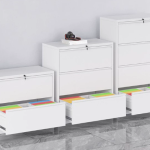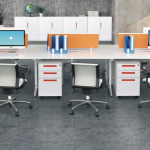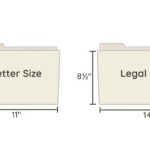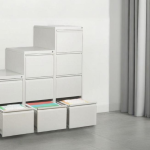When storing sensitive documents—legal contracts, HR files, or financial records—security is non-negotiable. There are many types of locks available for a lockable file cabinet, and not all locks provide the same level of protection. This guide will compare the most common locks, their pros and cons, and determine which lock is best for your security needs.
Why Does Lock Type Matter?
A file cabinet’s lock determines:
Resistance to picking/forced entry
Convenience of access
Long-term durability
Common threats to consider:
- Opportunistic theft (unlocked drawers)
- Lock picking/bypassing
- Physical tampering (prying, drilling)
Locking Mechanism Comparison
| Lock Type | Security Level | Best For | Pros | Cons |
|---|---|---|---|---|
| Key Lock (Cylinder) | 🔒 Moderate | General office use | Affordable, simple | Keys can be lost/duplicated |
| Combination Lock | 🔒🔒 High | HR/legal offices | No keys needed | Slower access |
| Central Locking (Cam Lock) | 🔒🔒 High | Multi-drawer security | One key controls all drawers | Single point of failure |
| Electronic Keypad | 🔒🔒🔒 Very High | High-security environments | Audit trails, temporary codes | Requires batteries |
| Biometric (Fingerprint) | 🔒🔒🔒🔒 Maximum | Financial/medical files | No keys/codes needed | Most expensive |
Deep Dive: How Secure Is Each Lock?
1. Traditional Key Locks
- How it works: A metal key turns a pin-tumbler cylinder.
- Security risks:
- Picking vulnerability (basic models can be picked in <30 sec)
- Key duplication (unless using restricted keys)
- Upgrade tip: Choose high-security cylinders (Medeco, Mul-T-Lock).
2. Combination Locks
- How it works: Dial or digital code unlocks the cabinet.
- Security risks:
- Code hacking (weak digital codes can be brute-forced)
- No entry logs (can’t track who accessed it)
- Best for: Offices needing keyless but budget-friendly security.
3. Central Locking Systems
- How it works: One key locks/unlocks all drawers simultaneously.
- Security risks:
- If the cam lock fails, all drawers are exposed
- Best for: Businesses that want quick access control without multiple keys.
4. Electronic Keypad Locks
- How it works: PIN code + optional RFID card access.
- Security features:
- Audit trails (logs who opened the cabinet and when)
- Temporary codes (for cleaners or auditors)
- Best for: Companies needing trackable access.
5. Biometric (Fingerprint) Locks
- How it works: Scans fingerprints to unlock.
- Security perks:
- No keys/codes to lose
- Impossible to duplicate access
- Best for: Top-secret files (law firms, government agencies).
How to Choose the Right Lock?
| Use Case | Recommended Lock |
|---|---|
| Home office / low-risk files | Key lock or combination |
| HR / legal documents | Electronic keypad |
| Financial / medical records | Biometric |
| Shared office access | Central locking + audit trail |
Pro Tip: Pair your lock with anti-pry doors and bolt-down kits for extra security.
Final Verdict
- Best budget security: Combination lock
- Best for tracking access: Electronic keypad
- Maximum security: Biometric lock
FAQs:
Q: Can a file cabinet lock be picked?
A: Yes—basic key locks are vulnerable. Opt for high-security cylinders or electronic locks.
Q: Are electronic locks reliable?
A: Yes, but choose ones with backup keys in case of battery failure.
Q: What’s the hardest lock to break into?
A: Biometric + reinforced steel construction (resist drilling/prying).





